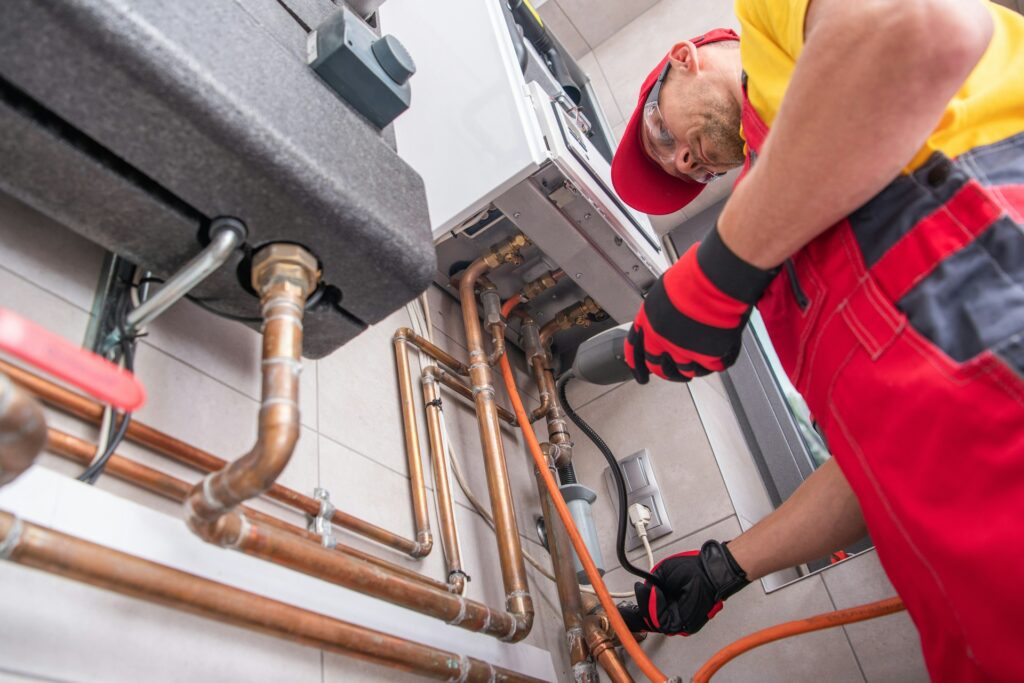Gas utilities play a vital role in powering homes and industries, but safety must always come first. Ensuring pipelines and other gas infrastructure are safe is a big challenge. Even small mistakes can lead to serious accidents, affecting both people and the environment.
AI, or artificial intelligence, is changing the game for safety in gas utilities. With its ability to analyze vast amounts of data, AI can help identify risks before they become problems. It offers real-time monitoring and alerts, so issues are addressed immediately. These tools transform how safety is managed, making operations more secure.
From spotting potential pipeline leaks to predicting equipment breakdowns, AI offers many ways to enhance safety in gas utilities. As more companies adopt these technologies, they’re seeing the benefits in improved reliability and lower risk. This article will explore the ways AI makes gas utilities safer, focusing on risk identification, real-time monitoring, maintenance, and workforce safety.
Identifying Risks with AI in Gas Utilities
Gas utilities face many risks, and identifying these risks is crucial for safety and efficiency. AI technologies play a key role in spotting potential hazards early.
One of the main uses of AI in gas utilities is leak detection. Gas leaks can be dangerous, leading to safety issues and financial losses. AI systems analyze data from sensors placed throughout the gas network to detect anomalies. These systems can identify patterns that indicate a potential leak, allowing for quick action before problems escalate.
AI also helps in monitoring pressure levels within gas pipelines. Maintaining the right pressure is important to prevent accidents or system failures. By using AI, utilities can analyze pressure data in real-time and identify any deviations from safe levels. This ensures that workers can address issues promptly and maintain safe operations.
Corrosion is another significant risk for gas pipelines. Over time, pipelines can corrode, leading to weaknesses and possible failures. AI algorithms can examine historical data and current conditions to predict corrosion rates. This information helps maintenance teams prioritize inspections and repairs, ultimately extending the lifespan of the pipeline infrastructure.
Environmental factors are also monitored using AI. Changes in temperature, humidity, and other conditions can affect gas flow and equipment integrity. AI systems track these variables to anticipate any adverse effects on the utility’s operations. Knowing what to expect allows utilities to prepare accordingly, reducing downtime and ensuring a steady supply of gas.
Using AI greatly enhances the ability of gas utilities to identify and manage risks. Through leak detection, pressure monitoring, corrosion prediction, and environmental assessment, AI tools ensure that utilities operate safely and efficiently. By addressing potential issues before they become serious problems, companies can protect both their infrastructure and their workforce.
Real-Time Monitoring and Alerts
Real-time monitoring is an essential part of maintaining safety and efficiency in gas utilities. AI technology enables utilities to have a constant watch over their systems and provides instant alerts for any issues.
1. Continuous Monitoring: AI systems are always on, gathering data from various sources like sensors in pipelines, gauges, and meters. This continuous data stream helps utilities keep track of the systems’ health at all times. If anything goes wrong, they can catch it immediately, ensuring quick responses.
2. Instant Alerts: When AI detects a problem, it sends alerts to the relevant personnel right away. These alerts can be sent to computers, tablets, or smartphones, making them accessible anytime and anywhere. Early warnings help prevent accidents and minimize damage by allowing fast intervention.
3. Automated Responses: In some cases, AI systems can trigger automated responses to specific issues. For example, if a gas leak is detected, the system might automatically shut off the affected section of the pipeline to prevent further leakage until human intervention is possible. This reduces the risk of harm to both workers and the public.
4. Data Analysis for Insights: Besides real-time alerts, AI also helps in analyzing collected data for insights into ongoing trends and potential risks. This analysis can reveal patterns that might indicate future problems, guiding preemptive measures and improving planning and decision-making.
5. Integration with Other Systems: AI-driven monitoring easily integrates with other operations and management systems. This creates a comprehensive view of the utility’s entire network, enabling better coordination and streamlined operations.
Real-time monitoring and alerts provided by AI bring peace of mind and safety to gas utilities. By staying ahead of potential issues, utilities ensure safe, reliable operations and can focus on optimizing processes rather than fighting fires.
Predictive Maintenance and Its Benefits
Predictive maintenance is a game-changer for industries like gas utilities, electric utilities, oil & gas, and vegetation management. It’s all about fixing things before they break. Using AI, companies can predict when equipment might fail and schedule maintenance accordingly.
For starters, AI looks at data from equipment sensors to spot when something is off. It checks things like temperature, vibration, and pressure. If these readings start to look unusual, AI can signal that maintenance is needed soon. This stops small issues from becoming big problems.
Predictive maintenance saves money. Regular or emergency repairs can be costly, and unexpected work stoppages hurt productivity. By fixing equipment before it fails, companies can avoid these costs and keep operations running smoothly.
It reduces downtime. When a machine breaks, it takes time to repair, leading to halted operations. With predictive maintenance, repairs can be planned at convenient times, reducing downtime and keeping things moving.
Safety also gets a boost. Faulty equipment can be dangerous, risking worker safety. Predictive maintenance means issues are caught early, keeping machinery safe to use. Workers can stay safe, knowing that the equipment is well-maintained.
Predictive maintenance provides accurate insights that help companies decide when and where to allocate resources. This planning ensures that maintenance teams focus on the most critical equipment, maximizing efficiency and effectiveness.
Enhancing Workforce Safety Through AI Tools
Workforce safety is a top priority in high-risk industries. AI tools are making it easier to keep workers safe on the job. These smart technologies help identify risks, improve communication, and ensure that workers follow safety protocols.
1. Risk Detection: AI systems use data from various sources like sensors and cameras to spot potential hazards. By analyzing this information, AI can alert workers about unsafe conditions before they become dangerous.
2. Safety Training: Some AI tools provide interactive training experiences. Using simulations and virtual reality, workers can practice dealing with emergencies in a safe environment. This hands-on training helps them understand how to react in real-life situations.
3. Wearable Technology: Devices that workers wear, such as smart helmets or vests, can monitor vital signs and environmental conditions. If a worker is exposed to harmful gases or extreme temperatures, the AI in wearables can send alerts, allowing for quick action to ensure safety.
4. Compliance Monitoring: AI systems can monitor work sites to ensure that workers follow safety protocols, like wearing protective gear or maintaining safe distances. This oversight helps maintain a culture of safety and reduces the likelihood of accidents.
5. Improving Communication: AI tools can facilitate better communication among team members, especially in large or noisy environments. By providing clear and direct alerts through mobile devices, workers can stay informed about safety issues and coordinate responses more effectively.
These AI tools provide valuable support for maintaining a safe work environment. By adopting smart technologies, industries can protect their workforce, reduce risks, and promote a safer way of working.
Conclusion
AI technologies are reshaping the landscape for gas utilities, electric utilities, oil & gas, and vegetation management. By incorporating AI-driven tools and practices, these industries can address potential risks, streamline maintenance, and enhance workforce safety. AI’s predictive features and real-time monitoring capabilities lead to significant improvements in efficiency and safety, providing a proactive approach to managing complex operations.
Predictive maintenance helps companies prevent costly breakdowns and downtime, while real-time alerts ensure quick response to any issues. AI tools like wearables and interactive training programs further bolster safety measures, protecting workers and enhancing compliance. The integration of AI solutions into these industries continues to drive a future of safer and more efficient operations.
To improve both safety and efficiency, embracing AI technologies is crucial. By leveraging these tools, industries can ensure their infrastructure and workforce are prepared to handle the challenges of today and tomorrow. Field1st is ready to support your journey in adopting these innovative safety management software. Contact Field1st to discover how we can help enhance your operation’s efficiency and safety with state-of-the-art AI tools.





